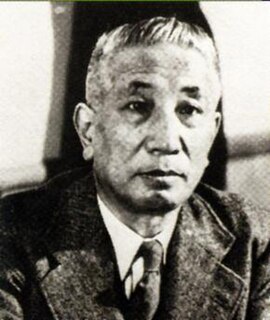 W
WNoriko Ibaragi was a Japanese poet, playwright, essayist, children's literature writer, and translator. She is most well known for her poem, Watashi ga ichiban kirei datta toki , written twelve years after the Japanese defeat in WWII. In 1953, she co-founded the literary journal Kai ("Oars"). She began to learn Korean as a second language at the age of fifty, going on to publish her own translations of poetry by her Korean contemporaries.
 W
WDaisaku Ikeda is a Japanese Buddhist philosopher, educator, author, and nuclear disarmament advocate. He has served as the third president and then honorary president of the Soka Gakkai, the largest of Japan's new religious movements. Ikeda is the founding president of the Soka Gakkai International (SGI), the world's largest Buddhist lay organization, which declares approximately 12 million practitioners in 192 countries and territories, of whom more than 1.5 million reside outside of Japan as of 2012.
 W
WMomoko Ishii was a distinguished Japanese author and translator of children's books. She was the first member of the Japanese Art Academy from the field of children's literature.
 W
WMorio Kita was the pen name of Sokichi Saitō , a Japanese psychiatrist, novelist and essayist.
 W
WYao Kitabatake was a poet and children's literature writer in Shōwa period Japan.
 W
WHakushū Kitahara is the pen-name of Kitahara Ryūkichi , a Japanese tanka poet active during the Taishō and Shōwa periods of Japan. He is regarded as one of the most popular and important poets in modern Japanese literature.
 W
WMasajirō Kojima was a Japanese novelist active in Shōwa period Japan.
 W
WKenji Miyazawa was a Japanese novelist and poet of children's literature from Hanamaki, Iwate, in the late Taishō and early Shōwa periods. He was also known as an agricultural science teacher, a vegetarian, cellist, devout Buddhist, and utopian social activist.
 W
WAllen Say is a Japanese-American writer and illustrator. He is best known for Grandfather's Journey, a children's picture book detailing his grandfather's voyage from Japan to the United States and back again, which won the 1994 Caldecott Medal for illustration. This story is autobiographical and relates to Say's constant moving during his childhood. His work mainly focuses on Japanese and Japanese American characters and their stories, and several works have autobiographical elements.
 W
WWakamatsu Shizuko was an educator, translator, and novelist best known for translating Little Lord Fauntleroy written by Frances Hodgson Burnett. She is also known for introducing literature with Christianity for children's novels.
 W
WSatomu Shimizu , better known by the pen name of Shūgorō Yamamoto , was a Japanese novelist and short-story writer active during the Shōwa period of Japan. He was noted for his popular literature, and is known to have published works under at least fourteen different pen names.